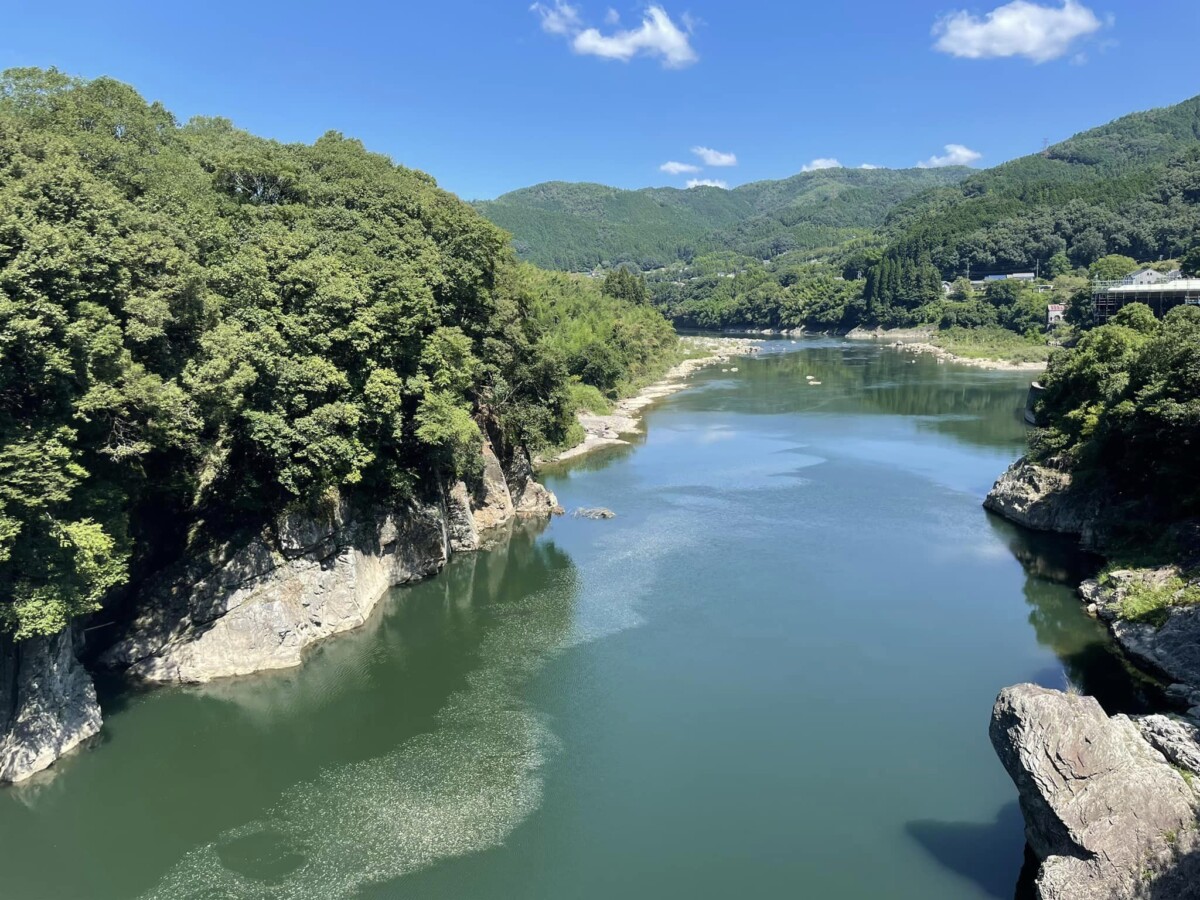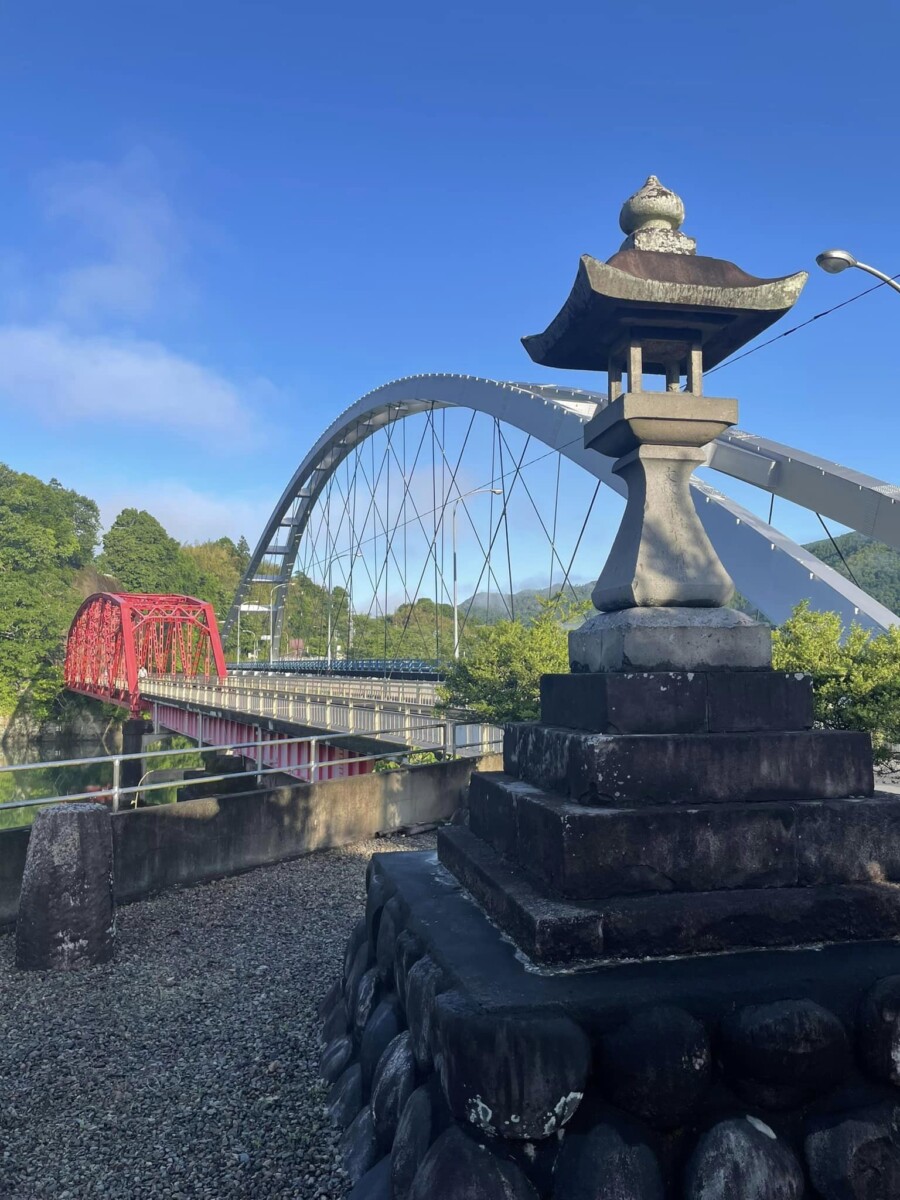Tracing the movements of people in a town that prospered through boat transport
Kurose Kaido and Kurose Minato

In the past, Yaotsu was a key point for assembling timber harvested in the upper reaches of the Kiso River into rafts, and at the same time, it was also a place where various products were traded. Transporting goods by river is called “boat transport.” Special products from the mountains were carried on the backs of men and horses along the Kurose Kaido Road, passing through the transit point Kutami, and then transported to Kurose Minato on the Kiso River, where they were loaded onto boats and sent to various downstream locations. The amount of cargo carried on each boat was 460 kan (approximately 1,725 kg), which included charcoal, firewood, ice, wood, konjac potatoes, tea, raw silk, and grains.
Kurose Kaido is an old main road that started at Kurose Minato, which was on the Kiso River flowing east to west in the south of Yaotsu Town, and went to Ena. Its total length is approximately 40.57 km. It was a very frequently used road that ran through the center of Fukuchi and Kutami in Yaotsu Town. When water transport along the Kiso River began around the fifth year of Kanbun (1665), the use of the Kiso River increased, and special products from the mountainous regions, products from the Owari region and daily necessities transported by boat to the port, and daily necessities were transported along the Kurose Kaido from east to west. It was carried north and south by men and horses. In 1943, when power generation dams were built in Kaneyama and Wachi, Yaotsu Town, Kurose Minato sank into the river, and when the long history of boat transport came to an end, the line of horses disappeared. The Kurose Kaido Road, which used to be used as a bell-ringing road, has no longer served its purpose, and only a small section of the road remains today.
Tracing the movements of people in a town that prospered through boat transport

筏乗りの家族が、安全を祈って灯りをともし続けた。
As mentioned above, Yaotsu Town, which does not face the sea, has developed and prospered mainly through water transport using the Kiso River, centered around Nishikori Tsunaba and Kurose Minato, and land transport using roads such as Kurose Kaido. Did.
In this experience, you will travel by boat along the Kiso River in Yaotsu Town, where timber and supplies were transported. Sosuikyo Gorge, which was selected as one of the 36 Scenic Views of the Kiso Three Rivers, is a place where you can enjoy the scenery of the beautiful autumn leaves that add color to the impressive rock walls in autumn, and is also famous as a cherry blossom viewing spot. It’s a place. Enjoy the spectacular view while feeling what the rafters who sweated in this place felt and thought in the past.
Afterwards, you can experience a stroll through the shopping street of Yaotsu-cho Honmachi-dori, which stretches north from Kurose Minato, where goods were brought in from north, south, east, and west, and where people went. We will walk through a town that prospered due to shipping, and where cultural exchanges between East and West were active. There are three Japanese confectionery shops selling delicious Kurikinton, a specialty of Yaotsu Town, and a street lined with the town’s two sake breweries.If you head further north from there, you will find clean water and a thriving brewing industry. There are stores where you can purchase delicious dried noodles made with local miso, soy sauce, pickles, and the old-fashioned “Shimada noodles.” Experience the climate and culture of Yaotsu Town, and search for your favorite item among the special products grown there.
Once you’ve procured your favorite ingredients for dinner, camp at Gifu, a small house in Fukuchi, Yaotsu Town, and reminisce about life in the past. The “Small House” Experience Accommodation Area” allows you to rent an area that includes a 10㎡ “Small House.” You are allowed to bring your own tent and tarp, so even beginners of camping can enjoy this popular outdoor style. At night, enjoy a relaxing time while looking at the starry sky that fills the entire sky.
Applications for 2023 are now closed.